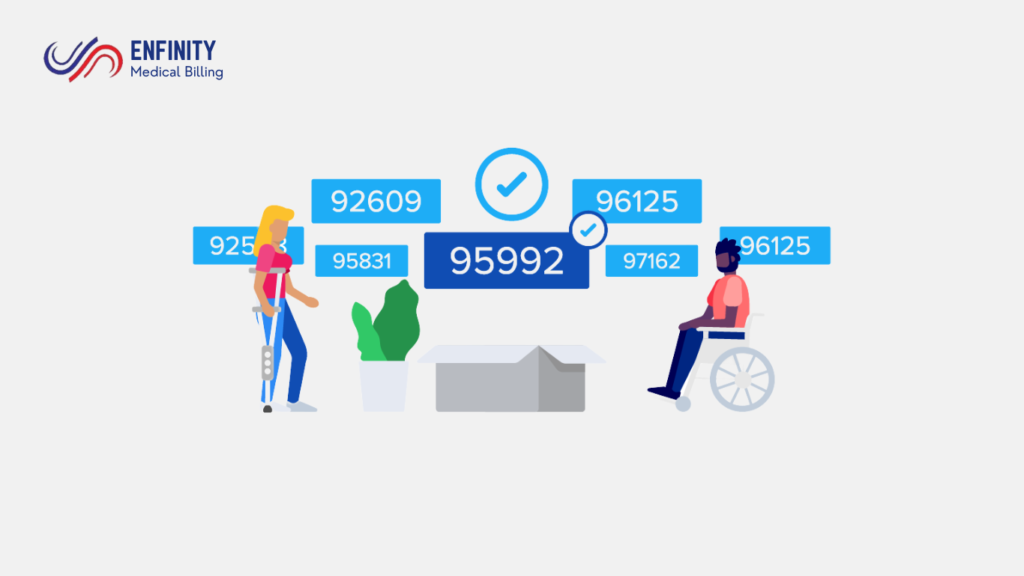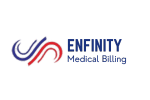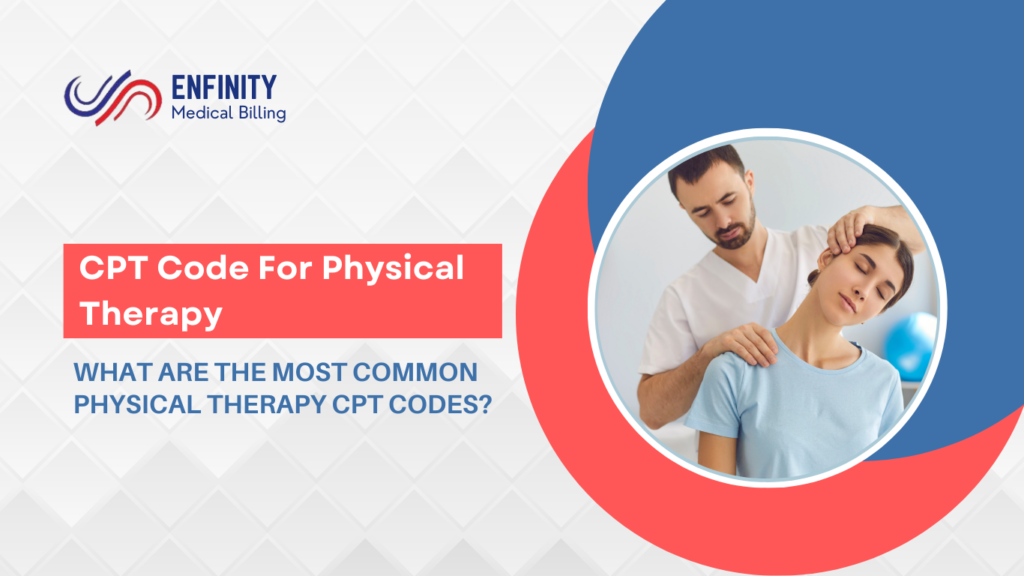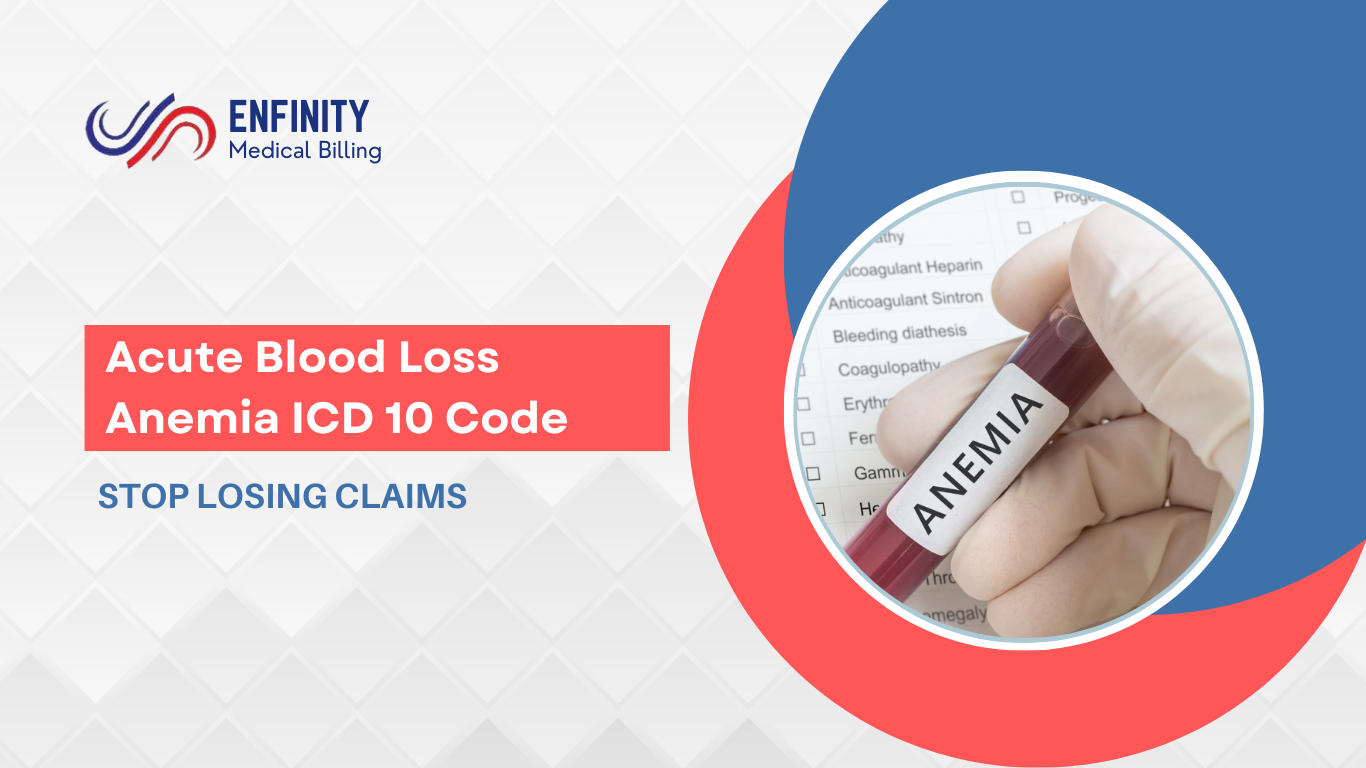Struggling with billing errors and claim denials? Incorrect use of physical therapy CPT codes is often the culprit, leading to delayed reimbursements and audits. In this guide, we’ll help you master the most important CPT codes for physical therapy to avoid costly mistakes.
What is a CPT Code?
CPT (Current Procedural Terminology) code is a five-digit number used to identify specific medical, surgical, and diagnostic services. These codes are used by healthcare providers, including physical therapists, to describe the services they provide. Proper usage of CPT codes for physical therapy ensures that treatments are correctly documented and billed.
For physical therapy CPT codes define everything from therapeutic exercises and manual therapy to modalities like electrical stimulation. These codes help insurance companies and Medicare determine the appropriate payment for the services rendered. Without correct coding, claims can be delayed or denied.

What are the Most Common Physical Therapy CPT Codes?
The most common physical therapy CPT codes are essential for almost every therapy session. Some of the most frequently used codes are
| 97110 | Therapeutic exercises designed to improve strength, endurance, range of motion, and flexibility (15 minutes) |
| 97140 | Manual therapy methods, including connective tissue massage, joint mobilization and manipulation, and manual traction (15 minutes) |
| 97112 | Neuromuscular Re-education: Therapeutic procedure for one or more areas, each lasting 15 minutes; focusing on neuromuscular reeducation of movement, balance, coordination, kinesthetic awareness, posture, and/or proprioception for sitting and/or standing activities |
| 97530 | Therapeutic Activities/Kinetic |
| 97010 | Hot packs |
| 97010 | Hot or cold packs therapy |
| 97010 | Cold packs |
| 97014 | Electrical stimulation (unattended) |
| G0283 | Electrical stimulation (unattended), to one or more areas for indication(s) other than wound care, as part of a therapy plan of care.) |
| 97161 | Physical therapy evaluation (Low complexity) |
| 97035 | Ultrasound (15 minutes) |
| 97116 | Therapeutic procedure, one or more areas, each 15 minutes; gait training (includes stair climbing)(15 minutes) |
| 97162 | Physical Therapy Evaluation (Moderate complexity) |
| 97535 | Self-care/Home Management Training: One-on-one direct contact (15 minutes) focusing on activities of daily living (ADL), compensatory training, meal preparation, safety procedures, and guidance on the use of assistive technology devices or adaptive equipment. |
| 97507 | Treatment of speech, language, voice, communication, and/or auditory processing disorder; individual |
| 97016 | Vasopneumatic devices |
| 97164 | Re-evaluation of physical therapy established plan of care |
| 97032 | Electrical stimulation (manual), each 15 minutes |
| 97012 | Application of modality to one or more areas; traction, mechanical |
| 97150 | Therapeutic procedure(s), group (2 or more individuals), untimed |
PT CPT codes are copyrighted by the American Medical Association (2022). All rights reserved.
Understanding Modifier 59: What It Is and How to Use It.
Modifier 59 is used to indicate that a procedure or service is distinct and separate from other services performed on the same day. It’s typically used when a procedure that is normally billed together with another service needs to be reported separately because it was performed independently under certain circumstances.
In the therapy setting, modifier 59 may come into play if you are providing two completely separate services during the same treatment session. For example, if you’re performing two distinct procedures that are not usually billed together, modifier 59 can be used to indicate that these services are separate and unrelated.

When Should You Use Modifier 59?
Modifier 59 is used when the services performed are:
- A different session or patient encounter
- A different procedure, site, or organ system
- A separate incision/excision, lesion, or injury
However, if there is another modifier that more accurately describes the situation, it should be used instead of modifier 59. Modifier 59 is a fallback option when no other modifier fits, and it should only be applied when there is a clear distinction between the services provided.
How Does It Work in Therapy?
In therapy, certain procedures are often performed together. The National Correct Coding Initiative (NCCI) identifies these common procedure pairs, called “edit pairs.” If you bill a PT CPT code that is part of one of these pairs, you may only receive payment for one of the codes. If the procedures you’re billing for are truly separate and distinct, modifier 59 allows you to bypass the NCCI edit and get reimbursed for both services.
Imagine a patient receives both manual therapy and therapeutic activities during a single session. These are two distinct services, and if Modifier 59 is applied to indicate they were performed independently, the therapist can receive reimbursement for both. Without the modifier, the insurance company might assume they were bundled as part of a single treatment and reimburse only one service.
When Should I Use Modifier 59?
Using Modifier 59 appropriately is key to ensuring that services are paid for correctly. You should use Modifier 59 when:
Are you billing for two services that form an NCCI edit pair?
Many procedures are subject to National Correct Coding Initiative (NCCI) edits, which suggest that certain services should be bundled together. Modifier 59 allows therapists to override this rule and bill the services separately if appropriate.
Did you perform those two services separately and independently of one another?
If the two treatments were distinct and performed separately, Modifier 59 can be used to bill each service independently. This applies when there is a clear difference between the two treatments.
Does your documentation support your assertion that you performed the two services separately and independently?
Proper documentation is crucial. Your notes must clearly show that the services provided were distinct and necessary for the patient’s treatment. This documentation is essential for justifying the use of Modifier 59.
Is a more descriptive modifier available?
Sometimes, a more specific modifier (such as XS, XP, or XE) might be more appropriate than Modifier 59, depending on the circumstances. If a more descriptive modifier applies, it should be used instead of Modifier 59.
What are the Most Commonly Used CCI Edits for PT, OT, and SLP Private Practice Settings?
The following table, provided by PT compliance expert Rick Gawenda, owner of Gawenda Seminars & Consulting, includes common CCI edit pairs related to various therapy types. Here’s how to use it:
- Locate the primary PT CPT codes you are billing in Column 1.
- Review Column 2. If the code listed in Column 2 is included, it will be considered linked or mutually exclusive.
- If you see a “y” next to the code in Column 2, you may apply modifier 59.
- If there’s an “n,” do not bill the code from Column 2 in combination with the code from Column 1.
Please note that this CCI edit list is specifically for Medicare. Most government insurers, including Medicare, Tricare, and Medicaid, generally follow this same list. However, private insurance providers often create their own edit pairs, so reimbursement is not guaranteed, even with modifier 59 applied.
| PT CPT Code | Description | Timed? | Column 2 y = use 59 modifier n = do not bill the code in combination with code in column 1 |
|---|---|---|---|
| 90912 | Biofeedback Pelvic Health: Initial 15 Minutes | N | 90901n; 97032y; 97110y; 97112y; 97530y; 97535y; 97550y |
| G0451 | Developmental testing | N | 96125y; 96127n; 96146y; 96160y; 96161y; 96523n |
| 92507 | Speech and Language Treatment, Individual | N | 0373Tn; 36591n; 36592n; 69209n; 69210n; 96523n; 97110y; 97112y; 97129y; 97150y; 97153n; 97154n; 97155n; 97156n; 97157n; 97530y; 97533y; G0268n |
| 92508 | Speech Group | N | 0373Ty; 36591n; 36592n; 69209n; 69210n; 92507y; 96523n; 97110y; 97112y; 97129y; 97150y; 97154n; 97155n; 97156n; 97157n; 97158n; 97530y; 97533y; G0268n |
| 92521 | Evaluation of Speech Fluency | N | 36591n; 36592n; 69209n; 69210n; 92620n; 92621n; 96105y; 96125y; 96130y; 96132y; 96136y; 96138y; 96146y; 96523n; 97151n; 97152n; G0268n |
| 92522 | Evaluation of Speech Production | N | 36591n; 36592n; 69209n; 69210n; 92620n; 92621n; 96105y; 96125y; 96130y; 96132y; 96136y; 96138y; 96146y; 96523n; 97151n; 97152n; G0268n |
| 92523 | Evaluation of Speech Production; with Evaluation of Language Comprehension and Expression | N | 36591n; 36592n; 69209n; 69210n; 92522n; 92620n; 92621n; 96105y; 96125y; 96130y; 96132y; 96136y; 96138y; 96146y; 96523n; 97151n; 97152n; G0268n |
| 92524 | Behavioral and Qualitative Analysis of Voice & Resonance | N | 36591n; 36592n; 69209n; 69210n; 92620n; 92621n; 96105y; 96125y; 96130y; 96132y; 96136y; 96138y; 96146y; 96523n; 97151n; 97152n; G0268n |
| 92526 | Treatment of Swallowing Dysfunction | N | 36591n; 36592n; 69705y; 69706y; 92511y; 92520y; 96523n; 97032n; 97110y; 97112y; 97150y; 97530y; 97802n; 97803n; 97804n; G0270n; G0271n; G0283n |
| 92597 | Evaluation of Voice Prosthetic | N | 36591n; 36592n; 96523n; 97755n |
| 92607 | Evaluation of Speech Generating Device | Y | 36591n; 36592n; 92507y; 92508y; 92521y; 92522y; 92523y; 92524y; 92597n; 92609y; 96523n; 97755n |
| 92608 | Eval of Speech Device (additional 1/2 hour) | Y | 36591n; 36592n; 96523n; 97755n |
| 92609 | Training and Fitting for Device | N | 35691n; 35692n; 92511y; 96523n |
| 92611 | Radiopaque Swallow Study | N | 36591n; 36592n; 69705y; 69706y; 70370y; 70371n; 76120n; 76125n; 92511y; 92610y; 96523n |
| 92612 | Flexible Endoscopic Swallow Eval | N | 31575n; 36591n; 36592n; 69705n; 69706n; 76120n; 76125n; 92511n; 92520n; 92610y; 92611y; 92614n; 96523n |
| 92614 | Flexible Fiberoptic Endoscopic Evaluation, laryngeal sensory testing by cine or video recording | N | 31575n; 36591n; 36592n; 69705n; 69706n; 76120n; 76125n; 92511n; 92520n; 92610y; 92611y; 96523n |
| 92616 | Flexible Fiberoptic Endoscopic Evaluation of swallowing and laryngeal sensory testing by cine or video recording | N | 31575n; 36591n; 36592n; 69705n; 69706n; 76120n; 76125n; 92511n; 92520n; 92610y; 92611y; 92612n; 92614n; 96523n |
| 95992 | Canalith Re-positioning | N | 36591n; 36592n; 92531n; 92532n; 96523n; 97110y; 97112y; 97140y; 97530y |
| 96105 | Assessment of Aphasia | Y | 36591n; 36592n; 96110y; 96125y; 96127n; 96146n; 96160y; 96161y; 96523n; 97151n; 97152n; 97153n; 97154n; 97155n; 97156n; 97157n; 97158n; G0451y |
| 96110 | Developmental testing, limited | N | 36591n; 36592n;; 96125y; 96146n; 96523n; 97151n; 97152n; 97153n; 97154n; 97155n; 97156n; 97157n; 97158n |
| 96112 | Developmental Test Administration; First Hour | 0362Tn; 0373Tn; 36591n; 36592n; 90791y; 90792y; 90832y; 90833y; 90834y; 90836y; 90837y; 90838y; 90839y; 90845y; 90846y; 90847y; 90849y; 90853y; 90865y; 90870y; 90880y; 92002y; 92004y; 92012y; 92014y; 96105y; 96110n; 96125y; 96127n; 96130y; 96131y; 96132n; 96133n; 96136n; 96137n; 96138n; 96146n; 96160y; 96161y; 96523n; 97151n; 97152n; 97153n; 97154n; 97155n; 97156n; 97157n; 97158n; 97161y; 97162y; 97163y; 97164y; 97165y; 97166y; 97167y; 97168y; G0380y; G0381y; G0382y; G0383y; G0384y; G0410y; G0411y; G0451n; G0463y; Check other E/M codes as well (99201-99497) | |
| 96113 | Developmental Test Administration; Each Additional 30 Minutes | Y | 0362Tn; 0373Tn; 36591n; 36592n; 90791y; 90792y; 90832y; 90833y; 90834y; 90836y; 90837y; 90838y; 90839y; 90845y; 90846y; 90847y; 90849y; 90853y; 90865y; 90870y; 90880y; 92002y; 92004y; 92012y; 92014y; 96110n; 96125y; 96127n; 96146n; 96160y; 96161y; 96523n; 97151n; 97152n; 97153n; 97154n; 97155n; 97156n; 97157n; 97158n; 97161y; 97162y; 97163y; 97164y; 97165y; 97166y; 97167y; 97168y; G0380y; G0381y; G0382y; G0383y; G0384y; G0410y; G0411y; G0451n; G0463y; Check other E/M codes as well (99201-99497) |
| 96125 | Standardized Cognitive Performance Testing | Y | 36591n; 36592n; 96127n; 96146n; 96160y; 96161y; 96523n; 97151n; 97152n; 97153n; 97154; 97155n; 97156n; 97157n; 97158n |
| 29581 | Multi-Layer Compression System – Below Knee | N | 29540y; 29550y; 29580y; 64451n; 64454y; 97140y; 97535y |
| 29584 | Multi-Layer Compression System – Entire Arm | N | 29125y; 29126y; 29130y; 29131y; 29260y; 64451n; 64454y; 97140y; 97535y |
| 97012 | Mechanical Traction | N | 96523n; 97018y; 97140y; 97164y; 97168y |
| G0281 | Electrical Stimulation – Stage 3-4 Wounds | N | 96523n; 97032y; 97164y; 97168y; G0283y |
| G0283 | Electrical Stimulation – Other Than Wound Care | N | 64451y; 64454y; 96523n; 97032y; 97164y; 97168y |
| 97016 | Vasopneumatic device | N | 64451y; 64454y; 96523n; 97032y; 97164y; 97168y |
| 97018 | Paraffin Bath | N | 96523n; 97022y; 97164y; 97168y |
| 97022 | Whirlpool | N | 96523n; 97602y; 97164y; 97168y |
| 97024 | Diathermy | N | 96523n; 97018y; 97026y; 97164y; 97168y |
| 97026 | Infrared | N | 96523n; 97018y; 97022y; 97164y; 97168y |
| 97028 | Ultraviolet | N | 96523n; 97018y; 97022y; 97026y; 97164y; 97168y |
| Physical Therapy Procedure Codes | Description | Timed? | Column 2 y = use 59 modifier n = do not bill the code in combination with code in column 1 |
|---|---|---|---|
| 97032 | Electrical Stimulation, Manual | Y | 96523n; 97164y; 97168y |
| 97033 | Iontophoresis | Y | 96523n; 97164y; 97168y |
| 97034 | Contrast Bath | Y | 96523n; 97164y; 97168y |
| 97035 | Ultrasound | Y | 96523n; 97164y; 97168y |
| 97036 | Hubbard Tank | Y | 96523n; 97164y; 97168y |
| 97039 | Unlisted Modality | Y | 96523n; 97164y; 97168y |
| 97110 | Therapeutic Exercises | Y | 36591n; 36592n; 96523n |
| 97112 | Neuromuscular Re-Education | Y | 36591n; 36592n; 96523n; 97022y; 97036y |
| 97113 | Aquatic Therapy/Exercises | Y | 36591n; 36592n; 96523n; 97022y; 97036n; 97110y |
| 97116 | Gait Training | Y | 36591n; 36592n; 96523n |
| 97124 | Massage | Y | 97164y; 97168y |
| 97129 | Cognitive Function–Initial 15 Minutes | Y | 36591n; 36592n; 96523n; 97153n; 97155n; 97164y; 97168y |
| 97130 | Cognitive Function–Each Additional 15 Minutes | Y | 36591n; 36592n; 96523n; 97153n; 97155n; 97164y; 97168y |
| 97139 | Physical Medicine Procedure | Y | 36591n; 36592n; 96523n; 97164y; 97168y |
| 97140 | Manual Therapy | Y | 95851y; 95852y; 96523n; 97018y; 97124n; 97750y |
| 97150 | Group Therapeutic Procedures | N | 95851n; 96523n; 97110y; 97112y; 97113y; 97116y; 97124y; 97127y; 97140y; 97153n; 97154n; 97155n; 97156n; 97157n; 97158n; 97530y; 97533y; 97535y; 97537y; 97542y; 97760y; 97761y; 97763y |
| 97530 | Therapeutic Activities | Y | 36591n; 36592n; 95851n; 95852n; 96523n; 97153n; 97154n; 97155n; 97156n; 97157n; 97158n; 97537y; 97542y; 97750y |
| 97533 | Sensory Integration | Y | 36591n; 36592n; 96523n; 97153n; 97154n; 97155n; 97156n; 97157n; 97158n; 97164y; 97168y |
| 97535 | Self Care/Home Management Training | Y | 36591n; 36592n; 96523n; 97164y; 97168y; G0270n; G0271n |
| 97537 | Community/Work Reintegration | Y | 36591n; 36592n; 96523n; 97164y; 97168y; G0270n |
| 97542 | Wheelchair Management— Assessment andTraining | Y | 36591n; 36592n; 96523n; 97164y; 97168y |
| 97545 | Work Hardening, First 2 Hours | Y | 36591n; 36592n; 96523n; 97140n; 97164y; 97168y |
| 97597 | Wound Care Selective First 20 sq centimeters | N | 29105y; 29125y; 29126y; 29130y; 29131y; 29200y; 29240y; 29260y; 29280y; 29305y; 29325y; 29345y; 29355y; 29358y; 29365y; 29405y; 29425y; 29435y; 29440y; 29445y; 29450y; 29505y; 29515y; 29520y; 29530y; 29540y; 29550y; 29580y; 29581y; 29584y; 96523n; 97022y; 97164y; 97602n; 97605y; 97606y; 97607y; 97608y; Check other E/M codes as well |
| 97598 | Wound Care Selective; Each additional 20 sq centimeters | N | 29105y; 29125y; 29126y; 29130y; 29131y; 29200y; 29240y;29260y; 29280y; 29305y; 29325y; 29345y; 29355y; 29358y; 29365y; 29405y; 29425y; 29435y; 29440y; 29445y; 29450y; 29505y; 29515y; 29520y; 29530y; 29540y; 29550y; 29580y; 29581y; 29584y; 96523n; 97022y; 97164y; 97602n; 97605y; 97606y; 97607y; 97608y; 97610y; Check other E/M codes as well |
| 97602 | Wound Care Non-Selective | N | 29105y; 29125y; 29126y; 29130y; 29131y; 29200y; 29240y; 29260y; 29280y; 29305y; 29325y; 29345y; 29355y; 29358y; 29365y; 29405y; 29425y; 29435y; 29440y; 29445y; 29450y; 29505y; 29515y; 29520y; 29530y; 29540y; 29550y; 29580y; 29581y; 29584y; 96523n; 97164y; 97607n; 97608n |
| 97610 | Low Frequency, Non-Contact, Non-Thermal Ultrasound | N | 36591n; 36592n; 96523n; 97035y; 97602n; 97607y; 97608y |
| 97750 | Physical Performance Test | Y | 36591n; 36592n; 95851n; 95852n; 96523n; 97150n |
| 97755 | Assistive Technology Assessment | Y | 36591n; 36592n; 95851n; 95852n; 96523n;97035y; 97110y; 97112y; 97140y; 97150n; 97530y; 97533y; 97535y; 97537y; 97542y; 97545y; 97750n; 97761y; 97763y |
| 97760 | Orthotic Management & Training, Initial Orthotic(s) Encounter | Y | 0213Ty; 0216Ty; 0228Ty; 0229Ty; 0230Ty; 0231Ty; 29044y; 29046y; 29049y; 29055y; 29058y; 29065y; 29075y; 29085y; 29105y; 29125y; 29126y; 29130y; 29131y; 29200y; 29240y; 29260y; 29280; 29305y; 29325y; 29345y; 29355y; 29358y; 29365y; 29405y; 29425y; 29435y; 29440y; 29445y; 29450y; 29505y; 29515y; 29520y; 29530y; 29540y; 29550y; 29580y; 29581y; 29584y; 36591n; 36592n; 96523n; 97016y; 97110y; 97112y; 97116y; 97124y; 97140y; 97164y; 97168y; 97763n |
| 97761 | Prosthetic Management and Training, Initial Prosthetic(s) Encounter | Y | 36591n; 36592n; 96523n; 97016y; 97110y; 97112y; 97116y; 97124y; 97140y; 97164y; 97168y; 97760y; 97763n |
| 97763 | Orthotic/Prosthetic Management and/or Training, Subsequent Orthotic/Prosthetic Encounter(s) | Y | 0213Ty; 0216Ty; 0228Ty; 0229Ty; 0230Ty; 0231Ty; 29044y; 29046y; 29049y; 29055y; 29058y; 29065y; 29075y; 29085y; 29105y; 29125y; 29126y; 29130y; 29131y; 29200y; 29240y; 29260y; 29280; 29305y; 29325y; 29345y; 29355y; 29358y; 29365y; 29405y; 29425y; 29435y; 29440y; 29445y; 29450y; 29505y; 29515y; 29520y; 29530y; 29540y; 29550y; 29580y; 29581y; 29584y; 36591n; 36592n; 96523n; 97016y; 97110y; 97112y; 97116y; 97124y; 97140y |
| 98975 | Remote Therapeutic Monitoring – Initial Set-Up and Patient Education | N | 36591n; 36592n; 93241n; 93242n; 93243n; 93244n; 93245n; 93246n; 93247n; 93248n; 96523n; 99091n; 99473n |
| 98976 | Remote Therapeutic Monitoring – Respiratory System | N | 36591n; 36592n; 93241n; 93242n; 93243n; 93244n; 93245n; 93246n; 93247n; 93248n; 96523n; 99091n; 99473n |
| 98977 | Remote Therapeutic Monitoring – Musculoskeletal System | N | 36591n; 36592n; 93241n; 93242n; 93243n; 93244n; 93245n; 93246n; 93247n; 93248n; 96523n; 99091n; 99473n |
| 98978 | Remote Therapeutic Monitoring – Cognitive Behavioral Therapy | N | 36591n; 36592n; 96158y; 96159y; 96523n; 98975n; 98976n; 98977n; 99091n; 99424n; 99425n; 99426n; 99427n; 99437n; 99439n; 99453n; 99454n; 99457n; 99458n; 99484n; 99492n; 99493n; 99494n |
| 98980 | Remote Therapeutic Monitoring Treatment Management Services – Initial 20 Minutes | Y | 97750n |
| 98981 | Remote Therapeutic Monitoring Treatment Management Services – Each Additional 20 Minutes | Y | 97750n |
How to Submit Claims for Initial Evaluation and Re-evaluation Services
Starting January 1, 2017, physical therapists (PTs) and occupational therapists (OTs) are no longer allowed to use PT CPT codes 97001, 97002, 97003, and 97004 for billing initial evaluations and re-evaluations. These codes have been replaced by a set of eight new evaluative codes: two for re-evaluations and six for evaluations.
However, this change is not as simple as a direct replacement. The new codes for initial evaluations are categorized based on the complexity of the evaluation. PTs and OTs must now assess whether a patient’s evaluation is of low, moderate, or high complexity and select the appropriate CPT code for physical therapy that reflects the level of complexity. Here’s a brief overview of the new codes:
Replacement CPT codes for physical therapy for 97001
| 97161 | Physical therapy evaluation: low complexity |
| 97162 | Physical therapy evaluation: moderate complexity |
| 97163 | Physical therapy evaluation: high complexity |
Replacement CPT Physical Therapy Codes for 97003
| 97165 | Occupational therapy evaluation: low complexity |
| 97166 | Occupational therapy evaluation: moderate complexity |
| 97167 | Occupational therapy evaluation: high complexity |
Replacement CPT code for physical therapy for 97002 and 97004
| 97164 | thorough examination (which involves reviewing the patient’s history and utilizing standardized tests and measures) An updated plan of care (developed using a standardized patient assessment tool and/or measurable evaluation of functional outcomes) |
| 97168 | Re-evaluation of an occupational therapy plan involves assessing changes in the patient’s status, updating the occupational profile, and revising the plan of care when there are changes in functional status or when significant adjustments are needed. |
Different Types of Physical Therapy Services
Physical therapy can look different depending on what the patient needs. There are several types of services to choose from, each offering unique benefits. Let’s take a closer look at some of the most popular ones:
Physical Therapy Concierge
Physical Therapy Concierge is a personalized service where the therapist works closely with you, often at your home or another location of your choice. This approach gives you more one-on-one attention and flexibility with your treatment. It’s perfect for people who want a customized plan and prefer to avoid going to a clinic.
One on One Physical Therapy
With One on One Physical Therapy, the therapist focuses on just you during the session. You get their full attention, and they tailor the treatment to your needs. This type of therapy is ideal for people who are recovering from surgery, injuries, or need special care. It helps you make faster progress since the therapist can focus entirely on you.
Travel Physical Therapy
Travel Physical Therapy is a service where physical therapists travel to different locations to provide therapy. This can be helpful if you can’t regularly visit a clinic, either because of distance, health issues, or a busy schedule. You get therapy wherever you are, whether it’s at home or another facility. This service is also great for people who are traveling or need therapy for a short period.
Choice Physical Therapy
With Choice Physical Therapy, you get to choose your therapist and treatment plan. This gives you more control over your recovery. Whether you prefer a specific therapy style or a therapist with a certain specialty, this service lets you decide what works best for you. It’s great for people who want to be more involved in their rehabilitation process.
Where to Find the Physician Fee Schedule Final Rule
CY 2024 Physician Fee Schedule Final Rule can be found here.
Let Enfinity help manage the complexities of Medicare modifiers. If we had a middle name, it’d be compliance. We have an in depth understanding of Medicare regulations CPT codes, ICD-10 codes, and all applicable modifiers, inside and out. Click the button to schedule a free online tour of Enfinity, and we’ll show you how we ensure regulatory compliance, so you get paid and avoid penalties.
FAQS – CPT code for physical therapy?
What is a CPT code for physical therapy?
CPT (Current Procedural Terminology) code is a five-digit code used to describe physical therapy procedures and services for billing and reimbursement.
Is 97140 a physical therapy code?
Yes, CPT code 97140 is used for manual therapy techniques like joint mobilization and manipulation.
What is a procedure code in therapy?
Procedure code in therapy refers to a numeric or alphanumeric code used to identify and describe specific therapy treatments for billing purposes.
What are ICD-10 codes for physical therapy?
ICD-10 codes are used to describe a patient’s diagnosis or condition that requires physical therapy. These codes help healthcare providers and insurers understand the reason for therapy.
b mean in physical therapy?
The term “B” in physical therapy often refers to “Bilateral”, meaning both sides of the body. For example, “B” might be used to indicate that a treatment or exercise involves both the left and right sides of the body.






